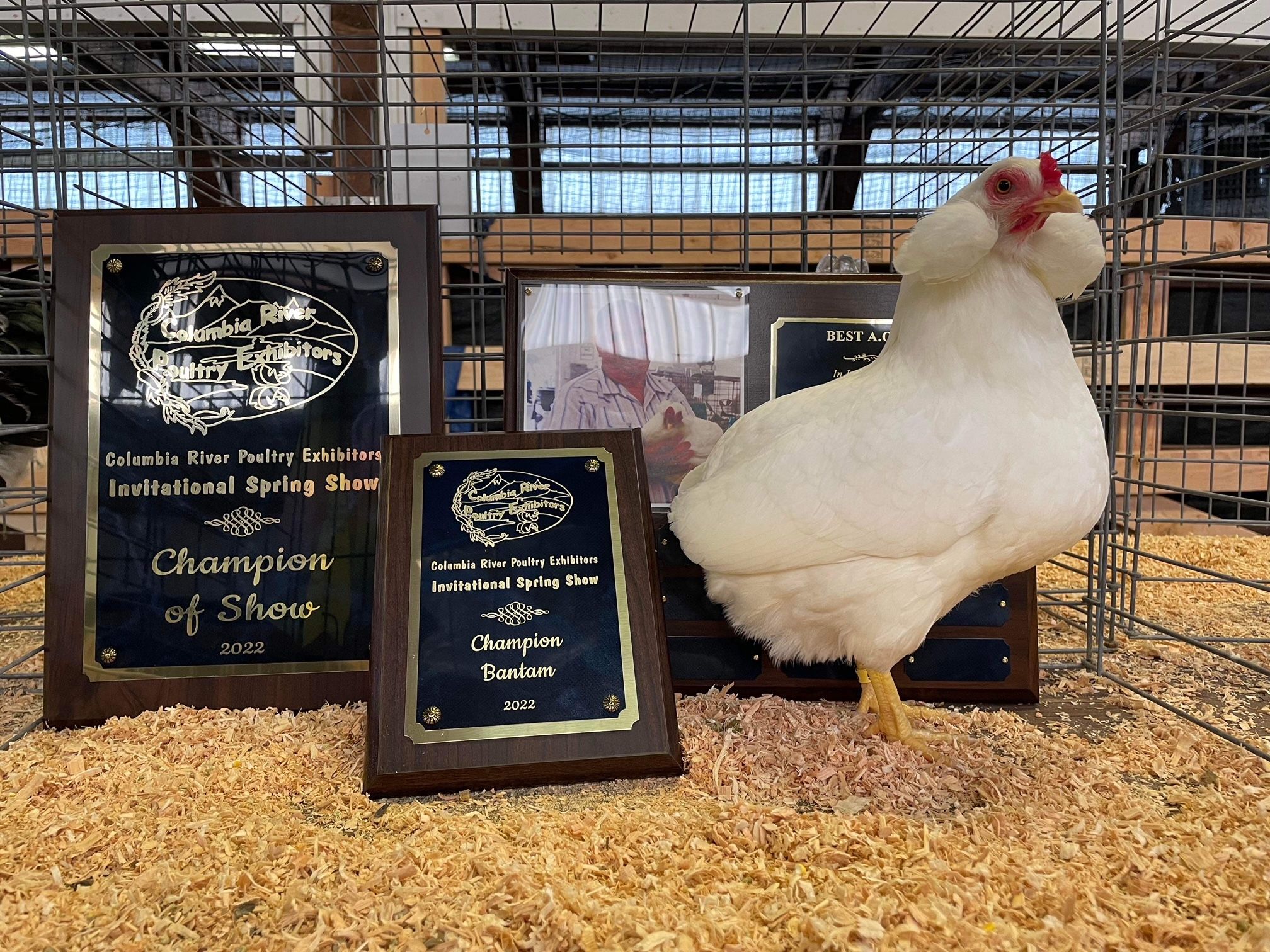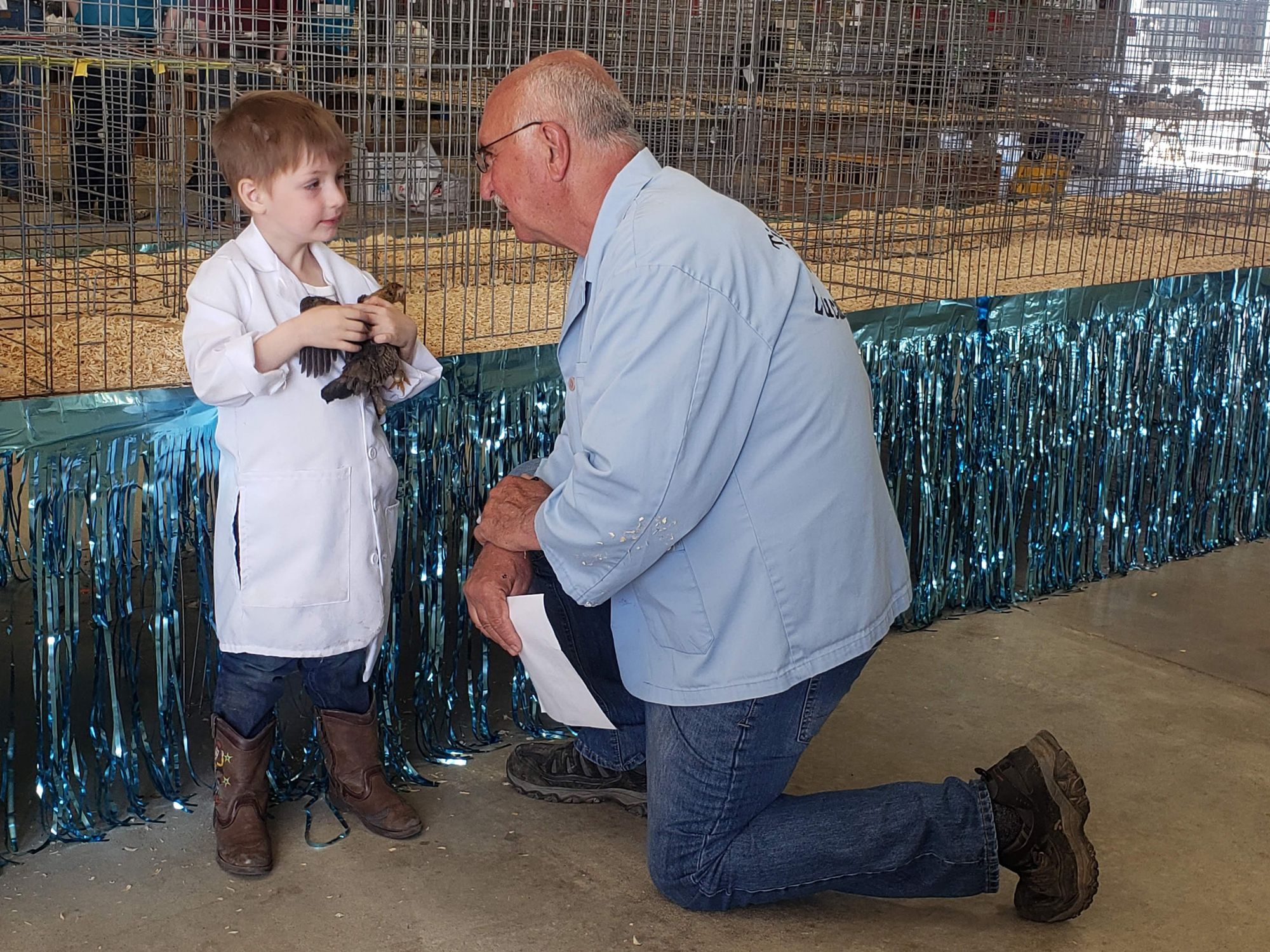Navigating the Showroom Layout
Basic Understanding of Poultry Shows


When you first walk into a poultry show, understanding the showroom layout can be overwhelming. If you are showing birds, knowing where to start looking for cages can take your stress to new heights. Understanding poultry shows comes with time but knowing the showroom layout before you even enter the building can help you feel a little more prepared to enter your first poultry show.
How It’s All Laid Out
Poultry shows, big and small, are generally open to three types of fowl recognized by the American Poultry Association and the American Bantam Association. Turkeys and waterfowl are shown, but chickens are by far the most common type of fowl at most shows.
It may appear at first glance that there are wall-to-wall chickens in no particular order. However, someone has worked hard to organize the birds. The pattern may not be apparent, but once you start understanding poultry shows, it will begin to make sense.
Large Fowl (Big), Bantam (Small), Waterfowl, Turkey, Guinea
The first thing you may notice is that there are very large birds and very small birds. You might even notice that some look almost identical, except for the size. The small birds are known as bantam, and the larger birds are referred to as large fowls. Waterfowl come in both sizes as you will see in the classes below. A few types of birds come only in large fowl or just in bantam, but many can be either. Large fowl are the standard size for a chicken, but bantams are popular because they are smaller, easier to handle, take up less space, eat less food and still provide many of the benefits of owning chickens. In the show, large fowl and bantams will be shown separately and in different areas of the showroom.
Classes
The next thing you may notice is that birds are grouped by breed and variety, with a specific group of breeds making up a class. For large fowl, the classes are named after the area of origin:
- American Class
- Asiatic Class
- English Class
- Mediterranean Class
- Continental Class
- All Other Standard Breed
For bantams, classes are named after physical characteristics:
- Game Bantams
- Modern Game
- Single Comb-Clean Legged (S.C.C.L.)
- Rose Comb Clean Legged (R.C.C.L.)
- All Other Comb Clean Legged (A.O.C.C.L.)
- Feather Legged (FL)
For waterfowl, classes are named after physical characteristics as well:
- Ducks
- Bantam
- Heavy
- Medium
- Light
- Geese
- Heavy
- Medium
- Light
Turkey and guinea are named after their variety (color):
- Turkey
- Beltsville small white
- Black
- Bourbon red
- Bronze
- Narragansett
- Royal Palm
- Slate
- White Holland
- Guinea
- Lavender
- Pearl
- White
Breed
Within each class will be several breeds. Each breed will have specific characteristics that differentiate it from all other breeds. For example, Brahma and Silkie are both in the Feather-Legged class; Rhode Island Red and Leghorn are both in the Single-Comb Clean-Legged (SCCL) class. Breeds will differ in shape, feather characteristics, comb and other attributes. The Standard of Perfection will provide information on breeds, their characteristics and their history.
Variety (Color)
If you look at a breed you will find that there are often many color patterns represented. For example, both large fowl and bantam Plymouth Rocks are recognized in Barred, White, Buff, Silver Penciled, Partridge, Columbian and Blue varieties. Each of these varieties has distinctive traits that set it apart from other varieties.
You may find some of the same varieties appearing in several breeds. For example, there are Buff Brahmas, Buff Cochins, Buff Orpingtons, Buff Silkies and a few other breeds with buff varieties. The Standard of Perfection will list the characteristics of each variety.
Poultry shows are set up first by a Class. Then each class is broken down by the breeds that are a part of that class. Each variety of the breed is in one area and organized by sex and age of the bird (cocks, cockerels, hens and pullets). Knowing this framework will give you an understanding of poultry shows and how they are organized.
Basic Showroom Courtesy
The unwritten rules of showing poultry:
- Knowing and following proper etiquette when attending or entering a poultry show creates a pleasurable experience for all involved: the show committee, the judges, the other exhibitors, visitors and, of course, you.
- Most of these unwritten “rules” are really a matter of common sense and none of them are a matter of “life or death.” These suggestions will make you feel like a seasoned exhibitor and not so much like a rookie.
- Fill out your entry form correctly, and always make a copy for yourself. Many shows have different forms that they use for their show. If you have questions (unsure of your breed/variety), reach out to the show staff and ask, this will avoid any confusion when you arrive at check-in.
- Be aware of when check-in is for the show. Some allow you to begin cooping in on Friday evening, while others may not allow cooping in until Saturday morning. Most shows have a time when judging begins. Normally, that is around 9:00 a.m., but be sure to check the catalog for the timing of judging so your birds are in the cages in time for judging.
- Be aware when judging has begun, if there is a judge in the aisle you wish to walk down, be sure the judge is not judging in that aisle. Judges are happy to answer questions after the judging has been completed, but you should refrain from trying to ask them questions during judging.
- Be aware of when you are allowed to remove your birds to head home. We all like to get on the road early and get home but it is courteous to hang around for the awards announcements. Congratulating others on their win is important as we are all hobbyists in this and being a good sport should be considered as in any competition.
Tags:The APA Back Story

Chicken Whisperer is part of the Catalyst Communications Network publication family.










